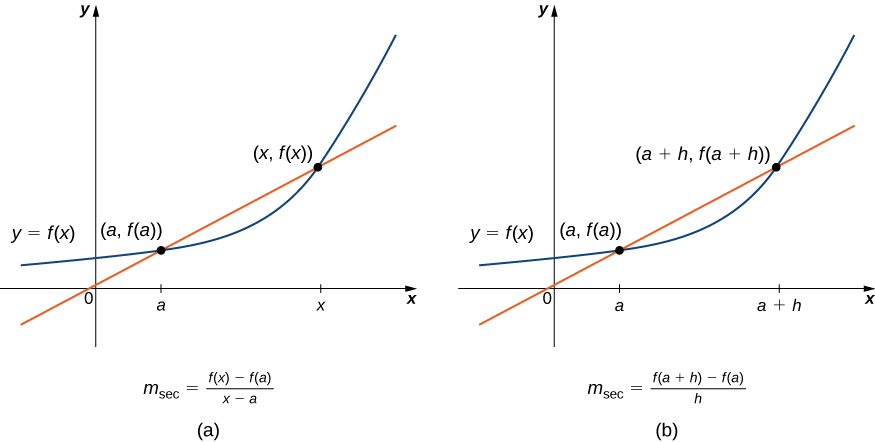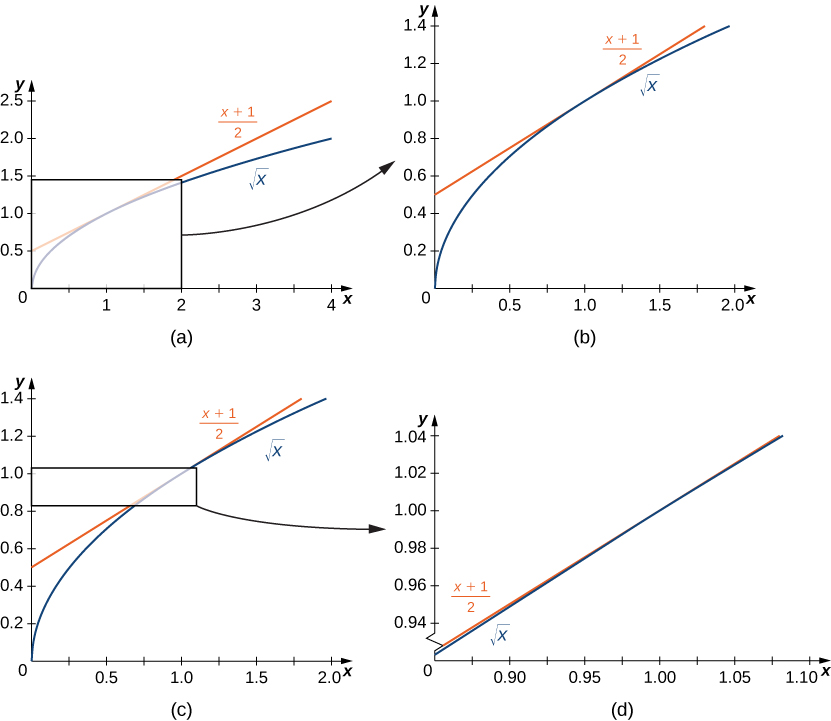| << Chapter < Page | Chapter >> Page > |

In [link] (a) we see that, as the values of approach the slopes of the secant lines provide better estimates of the rate of change of the function at Furthermore, the secant lines themselves approach the tangent line to the function at which represents the limit of the secant lines. Similarly, [link] (b) shows that as the values of get closer to the secant lines also approach the tangent line. The slope of the tangent line at is the rate of change of the function at as shown in [link] (c).

You can use this site to explore graphs to see if they have a tangent line at a point.
In [link] we show the graph of and its tangent line at in a series of tighter intervals about As the intervals become narrower, the graph of the function and its tangent line appear to coincide, making the values on the tangent line a good approximation to the values of the function for choices of close to In fact, the graph of itself appears to be locally linear in the immediate vicinity of

Formally we may define the tangent line to the graph of a function as follows.
Let be a function defined in an open interval containing The tangent line to at is the line passing through the point having slope
provided this limit exists.
Equivalently, we may define the tangent line to at to be the line passing through the point having slope
provided this limit exists.
Just as we have used two different expressions to define the slope of a secant line, we use two different forms to define the slope of the tangent line. In this text we use both forms of the definition. As before, the choice of definition will depend on the setting. Now that we have formally defined a tangent line to a function at a point, we can use this definition to find equations of tangent lines.
Find the equation of the line tangent to the graph of at
First find the slope of the tangent line. In this example, use [link] .
Next, find a point on the tangent line. Since the line is tangent to the graph of at it passes through the point We have so the tangent line passes through the point
Using the point-slope equation of the line with the slope and the point we obtain the line Simplifying, we have The graph of and its tangent line at are shown in [link] .

Use [link] to find the slope of the line tangent to the graph of at
The steps are very similar to [link] . See [link] for the definition.
We obtained the same value for the slope of the tangent line by using the other definition, demonstrating that the formulas can be interchanged.

Notification Switch
Would you like to follow the 'Calculus volume 1' conversation and receive update notifications?